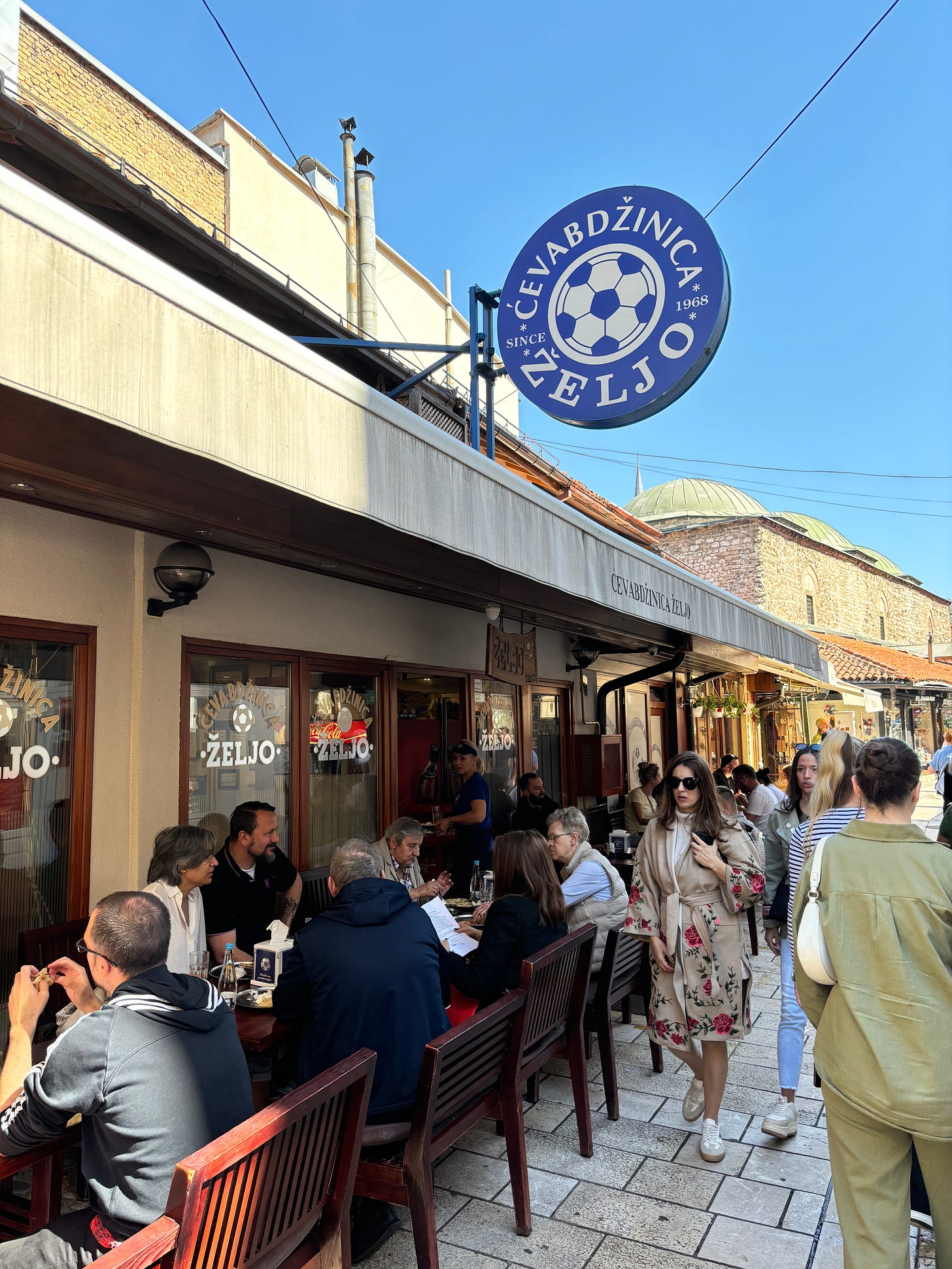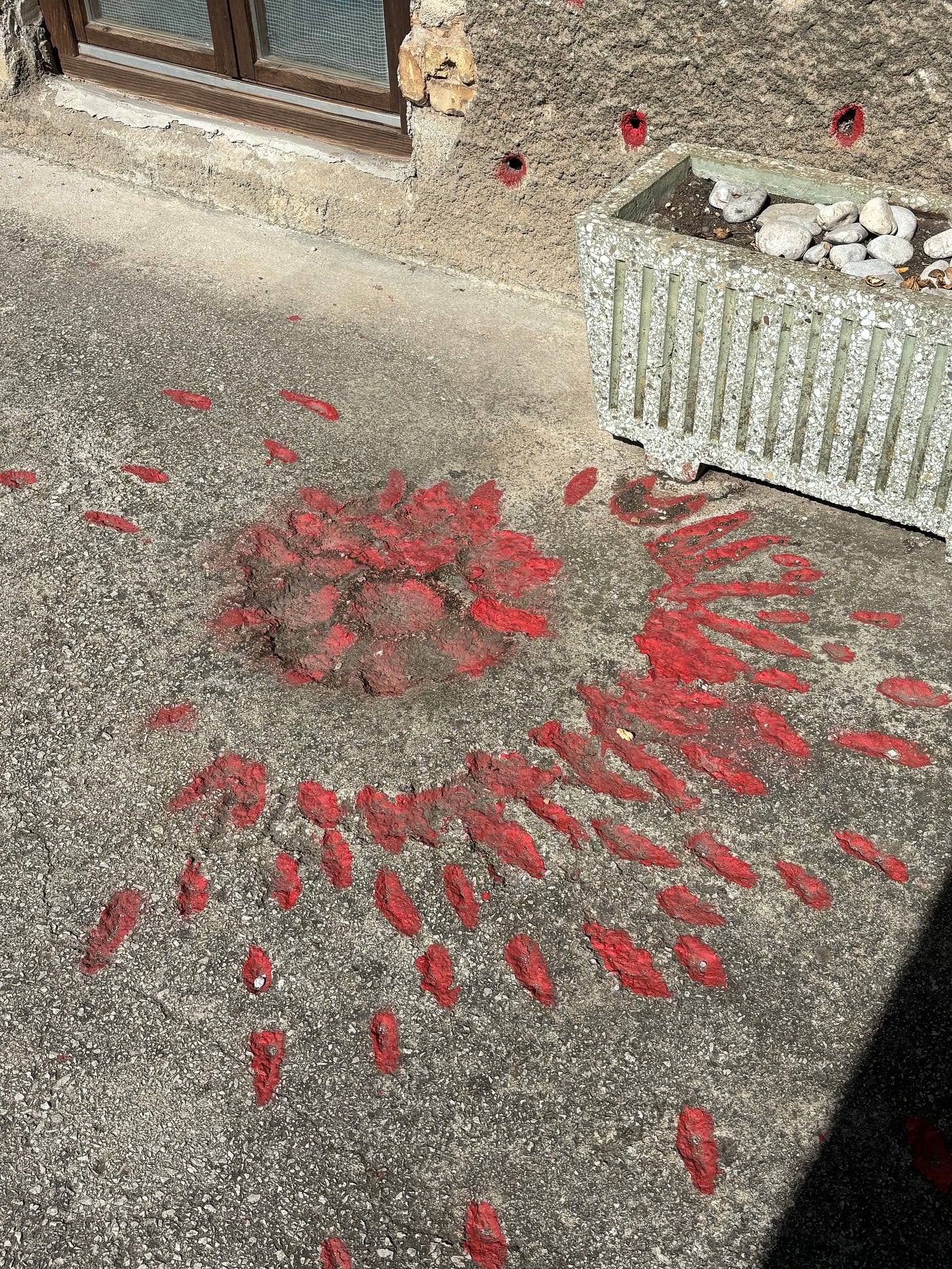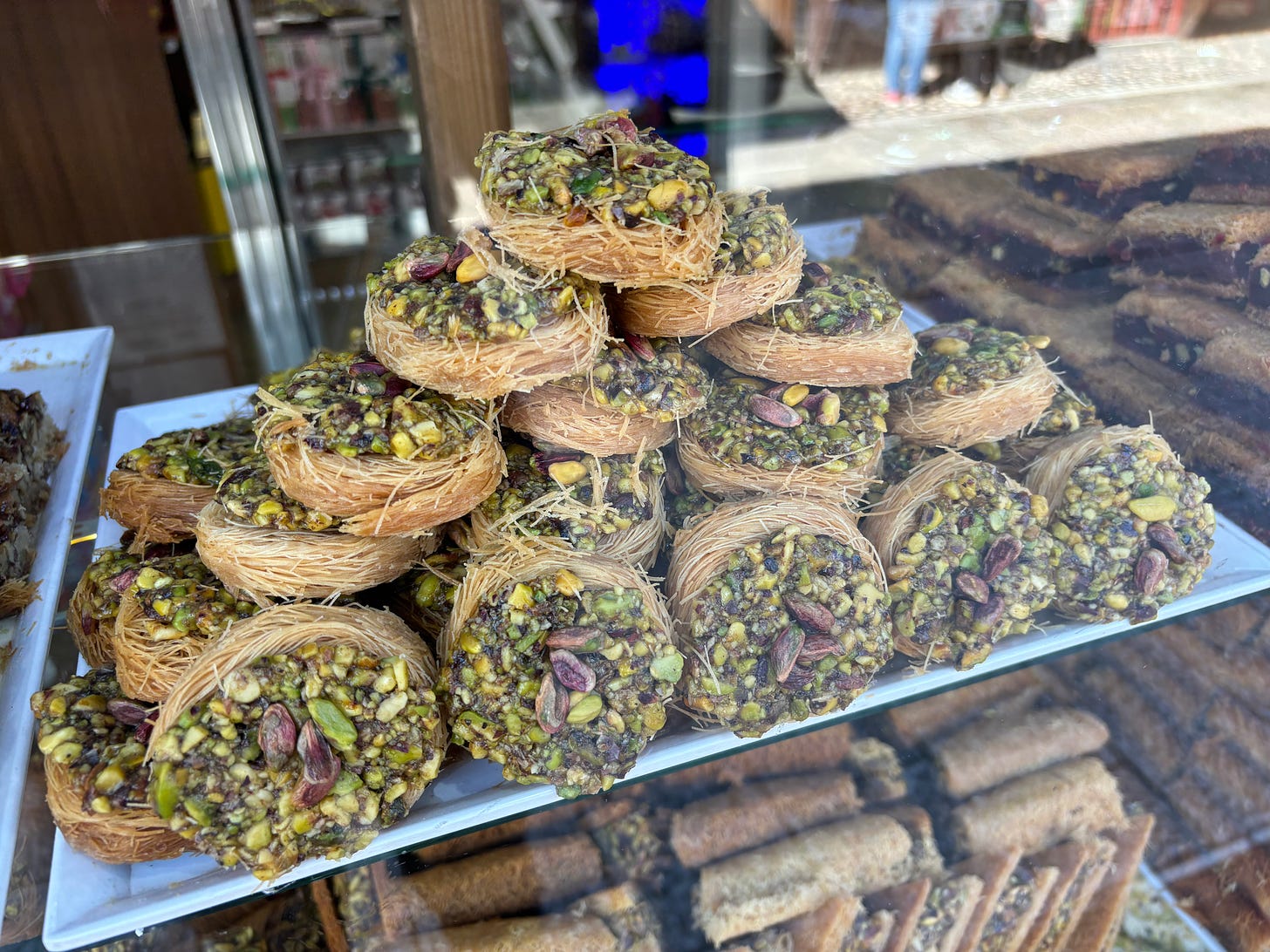“The more people explore the world the more they realize in every country, there's a different aesthetic. Beauty is in the eye of the beholder.” Helena Christensen
After our “great expedition” to see the Pyramid of the Sun, Maja and I headed to Sarajevo for the day before returning to Zagreb.
Since we didn't have a lot of time, we spent the day at Baščaršij, Sarajevo’s old bazaar.
One of the first sites you see when entering the market is the Sebilj. The Ottoman-style wooden fountain in the center of Baščaršija Square, built in 1753. It is somewhat of a trademark for the city.
The market was full of modern souvenirs in century-old buildings. The place was buzzing with people shopping, dining and sipping Turkish coffee in cafes, and candy stores with Turkish delights and baklava displayed in the windows. It’s a paradise for anyone with a shopping addiction and sweet tooth.
One of the things I noticed (and loved) about Sarajevo was the people and how much socializing happens here. People are really engaged with each other instead of on their phones.
Just look at these guys. I loved watching these three men talking, laughing, and drinking their coffee. Completely in the moment and content. They had moved their table and chairs to enjoy the sunshine. I think this is a lost art. Slowing down, being in the moment, and socializing. Why don't we all do this more often? Look at how happy that guy in the middle is. I want to be like him.
As we walked around I felt myself being pulled like a magnet into this little shop filled with gold and copper items used to make and serve Turkish coffee.
When I walked inside nobody was in the store. The owner was outside chatting with one of the other vendors.
The items in this store were shiny and mesmerizing. I felt like Aladdin in the Disney movie Aladdin, when he went into the cave and discovered all the gold and Jewels where the genie (Robin Williams) was trapped. I couldn't stop staring.
After a bit, the owner, Moamer came inside to see if we needed any assistance. Yes. Yes, I do. Take my wallet, I want it all. It was so beautiful.
Moamer explained that he was the man behind the magic. He is responsible for handcrafting all these gorgeous pieces of art.
Look at the craftsmanship of his work. All the little details. This man is a true artist.
I also loved his sales pitch. Which was…he didn't have one. He wasn't trying to push a sale. He is an artist, not a salesman after all. He was shy and very matter-of-fact when he explained which coffee sets were for display and which ones were to be used to make and serve coffee.
Sold.
I bought two items. A coffee set and this gold thing in the photo below. Does anyone besides my friend Sybil know what this item is that I purchased?
It’s a hand-crank coffee grinder. Moamer made it and showed me how to use it. It’s surprisingly very heavy. It will probably last a few lifetimes.
Maja has been to Sarajevo before so she knows all the best spots in town. She had two specific restaurants that she wanted me to experience to taste some authentic cuisine.
First, we went to Buregdžinica to get a burek (with meat) and sirnica (which is stuffed with cheese) to go. Both are pastries made of flaky dough filled with your choice of stuffing. We “needed” snacks for the car ride back to Zagreb. We had to eat it before the border…no crossing the line with meat and cheese.
These are delicious and a must-try if you visit.
Then we went to another hot spot, Ćevabdžinica Željo, that is so famous they now have three locations to accommodate the crowds.
Maja suggested I try the Čevapi. It is a grilled dish of minced meat served with onions, a thick cheese (the consistency was similar to sour cream), pita bread, and a big glass of yogurt. It is considered a national dish of Bosnia and Herzegovina and Serbia.
I tore the pita open so you can get a better look inside. Another delicious meal you should add to your list of things to try in Bosnia.
Sadly, it was almost time for us to leave Bosnia and go back to Zagreb. Our visit ended on a somber note. Maja suggested we visit the Tunnel of Hope museum on our way out of town.
From Wikipedia:
The Tunnel of Hope, was a tunnel constructed between March and June 1993 during the Siege of Sarajevo in the midst of the Bosnian War. It was built by the Army of the Republic of Bosnia and Herzegovina (ARBiH) in order to link the city of Sarajevo, which was entirely cut off by the Army of Republika Srpska (VRS), with ARBiH-held territory on the other side of the Sarajevo Airport, an area controlled by the United Nations.
The museum is the former home of the Kolar family who (single-handly) preserved the tunnels to make it a historic landmark.
As you can see from the holes on the front of their home, it was damaged by mortar shells during the war.
The bomb landed directly in front of their home, barely missing it. A local artist has filled the holes around Sarajevo to remind people of the damage that was done.
The museum only takes Bosnia Marks (no Euros or credit cards) and since we spent all our cash shopping, they sent us to the neighbor's house to exchange some Euros.
When we went inside, we met a lovely woman who exchanged our money and told us her story.
Sadly, her family home and barn were hit by bombs, caught fire, and burned to the ground while they were hiding in the shelter below. Thankfully, all of her family members survived the fire but they lost all their farm animals who were trapped in the barn. She said it was the worst day of her life.
Her sister also gave birth in the original home during the war.
The home you see today is the home they rebuilt after the war. She is standing at the door and directing us to look at the original hole used to dig the tunnel.
The crawlspace you see in the photo is where it all began.
These are the remnants from the war she found in her yard.
It’s hard to imagine that Sarajevo went from hosting the 1984 Olympics to being surrounded by people trying to kill them in 1992.
Once inside the museum, there is a wall dedicated to all the men who helped to dig the tunnel. They were all just local citizens trying to save their community from starving to death. The tunnel was used to transport food and materials to the village. It was also used to transport injured soldiers as well.
It took four months and four days of around-the-clock digging to reach the other side of freedom. The men had four sets of workers, working eight-hour shifts. This tunnel saved their lives and the village.
Maja and I have spent time talking about the war and her personal experience. She was six years old when it started. She has shared private details about her and her family’s experience in Zagreb during that time. She has opened my eyes and taught me a lot. I cannot imagine the stress and worry of living through and surviving a war. My heart goes out to everyone whose lives have been affected by these (and current) horrific tragedies.
Hopefully, one day our world will learn that war solves nothing but leaves a wake of destruction in the lives of everyday citizens.
Good Things List
Maja
The wonderful people of Sarajevo
Much love & gratitude from Bosnia! 🇧🇦Namaste 🙏
Don’t forget to like and share this post, please. Thank you.
To see more photos and videos from my adventures, follow me on social media. Facebook, Instagram, YouTube, X (Twitter), TikTok, Threads, and Pinterest, or connect with me on LinkedIn.































The "lost art" you are mentioning can so easily be "found" again, right? 😘
Another lovely visit but also a sad one. War is senseless. Destroys people and lovely places.